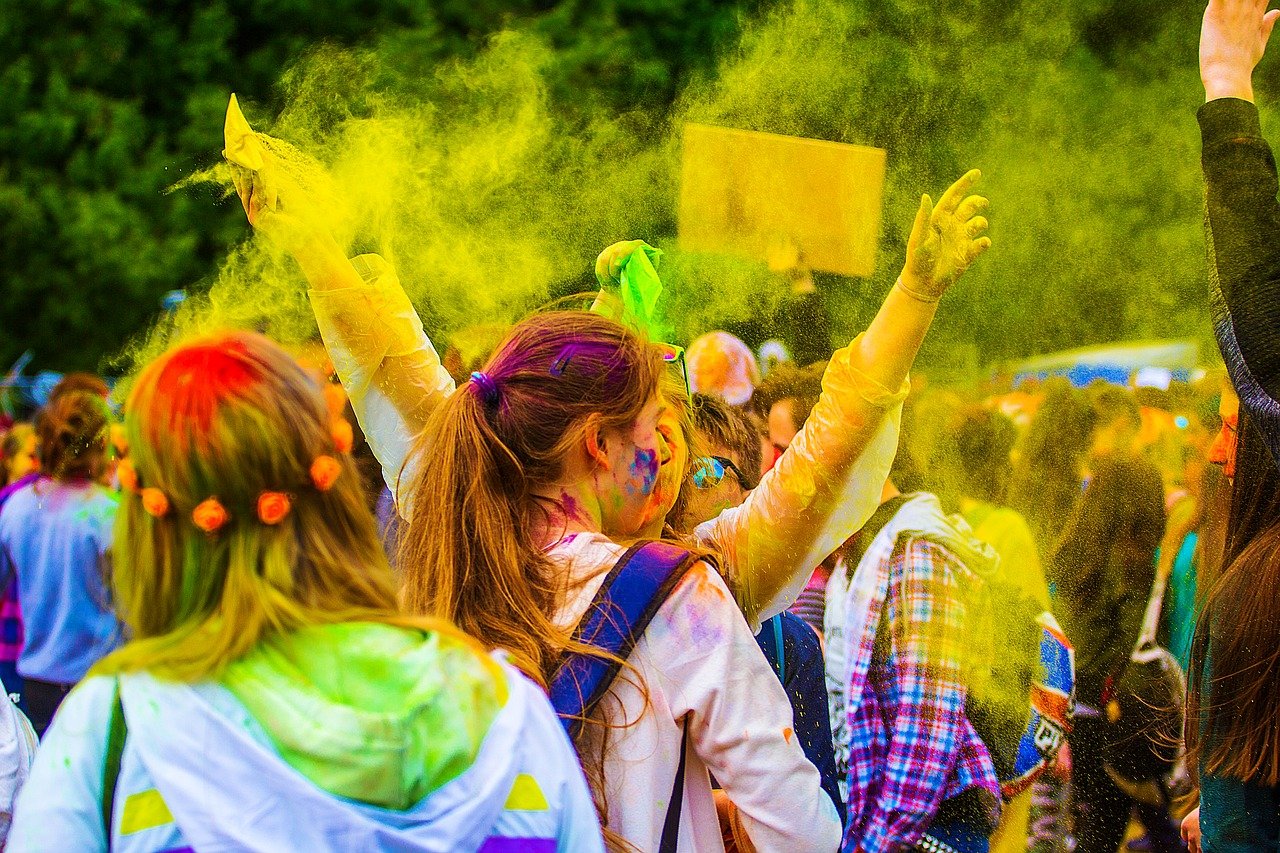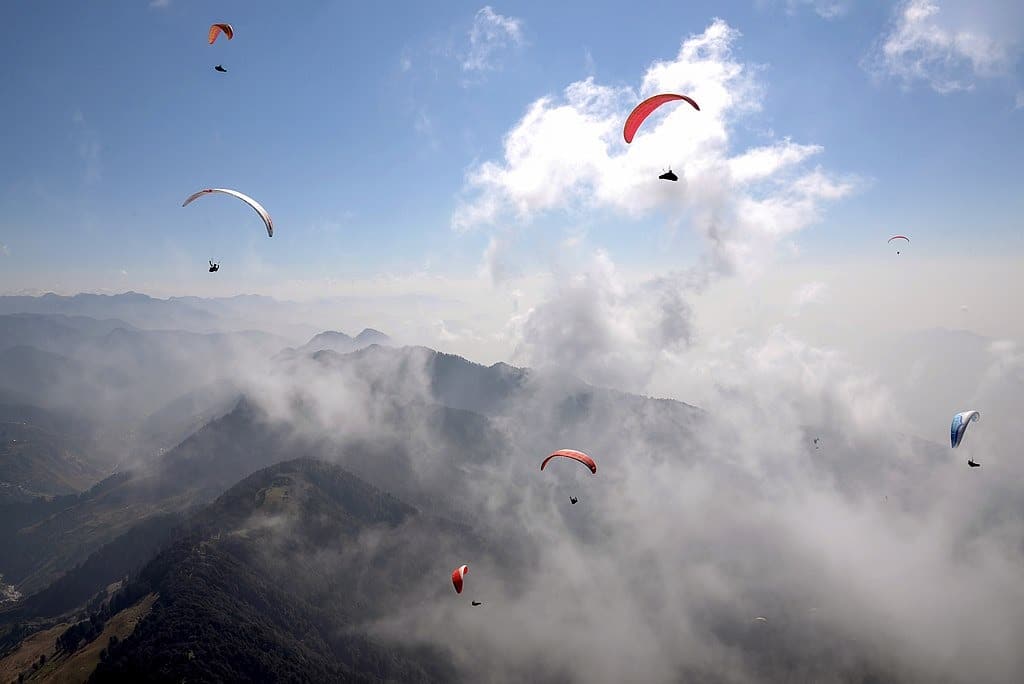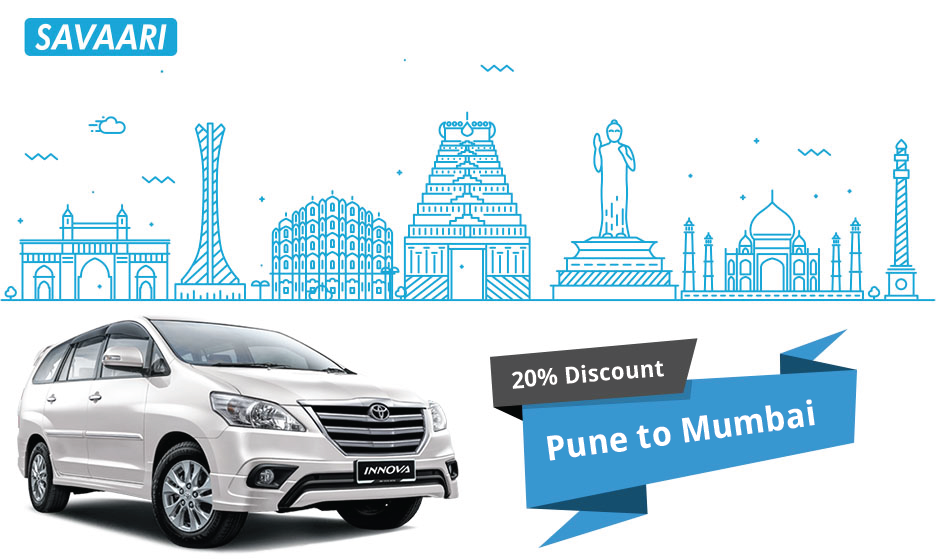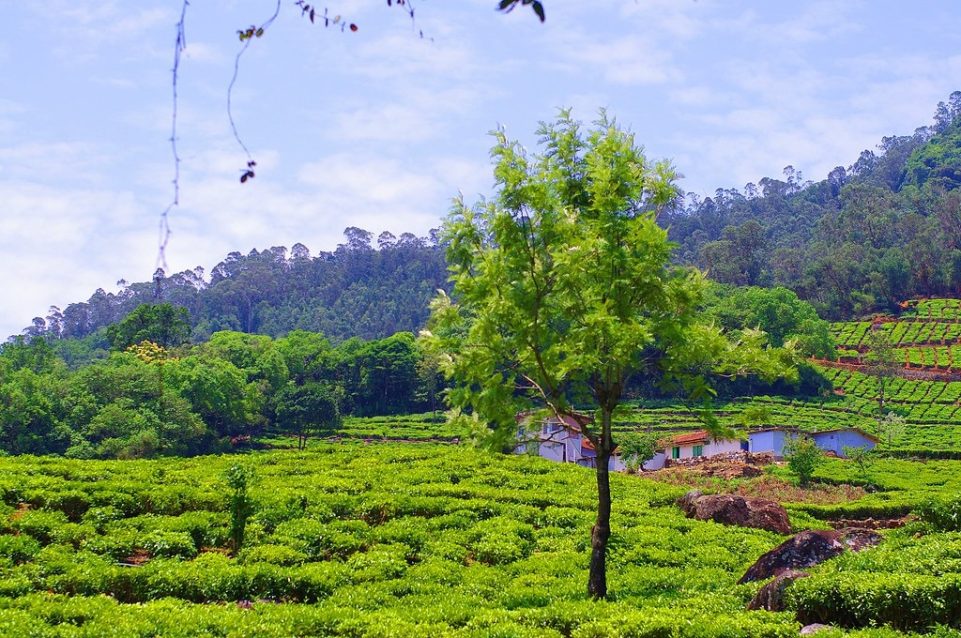A kaleidoscopic cloud hangs in the sky and is about to burst! At the approach of the spring equinox, on Phalguna Purnima, the sound of chartbusters like ‘O rang barse bheege chunar waali rang barse’ and ‘Balam Pichkari’ can be heard on every street corner. You see people dressed in white leave their homes to brighten up the neighborhood. They celebrate with friends by colouring every piece of cloth and extending the truce to their enemies by colouring their faces. You see foreigners carrying local children on their shoulders and throwing gulal at everyone. The joy of playing with colours becomes even more magical in the backdrop of mountains and ancient temple ruins.
This is a snapshot of Holi in Hampi, a vibrant experience in the village of architecture, mythology, and heritage.
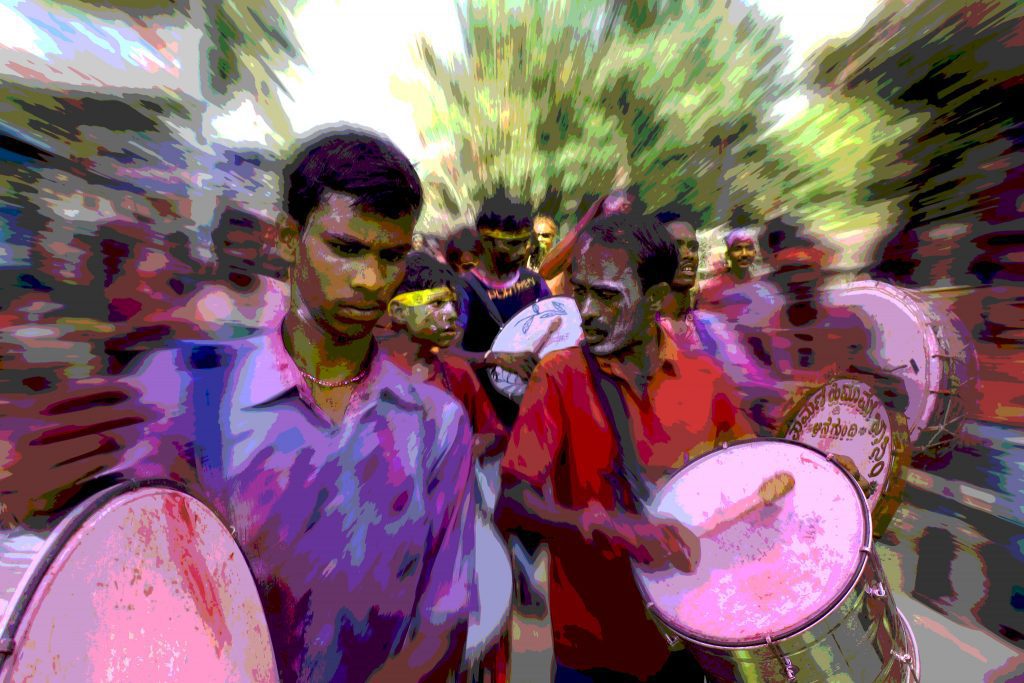
Even though Holi is not widely celebrated in South India, Hampi, also known as the ‘City of Ruins,’ drenches itself in colours on this day. Hampi is best known for its stunning Vijayanagara ruins and temples, as well as its distinctive rocky landscape. The Holi celebrations in this small town are worth seeing and participating in.
The people of Hampi celebrate spring by drumming and dancing with zeal. They dress up in white and gather along the banks of the Tungabhadra River to enjoy the festivities. The city reflects the charm of an era gone by, as one is transported back to the middle ages when one sees Holi played in the ruins of the Vijayanagara Kingdom.
[Also read: Hampi – An Essential Sanctum for the History Lover]
Hampi Holi in History
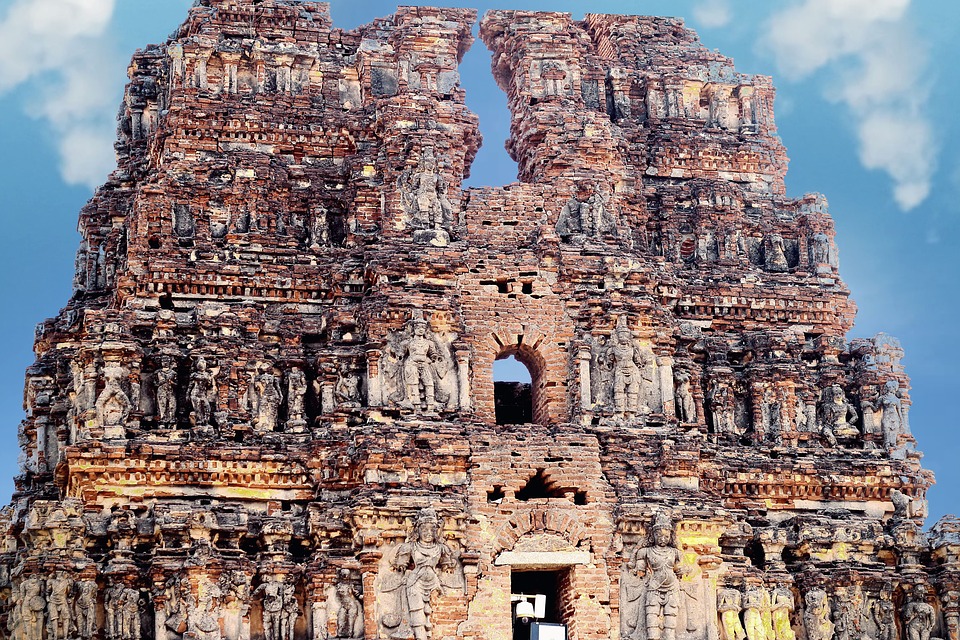
Holi has been the only festival whose purpose has changed over the years, and the only festival that has single-handedly built a culture of art, social equilibrium, and brotherhood. It was Holi that enabled the forward-thinking Krishnadevraya, emperor of the Vijayanagara empire, to give the king a platform to connect with his subjects, informally. In the Indian Museum, one can find a granite relief dating back to the 15th century, depicting the Holi festival from Hampi, Karnataka. In describing the relief, an Italian traveller of King Devaraya’s time, Niccolo De Conti wrote in his travelogue:
“There are also three other festival days, during which they sprinkle all passers-by, even the king and queen themselves, with saffron water, placed for that purpose by the wayside. This is received with much laughter.”
Niccolo De Conti
Here’s a picture of the relief. You can see the prince and princess being sprayed with water from pichkaris (water guns filled with coloured water) by the dancers.
Holi in Hampi Today
Hampi is one of the best places to visit in South India for Holi celebrations. For two days, Hampi celebrates Holi with a sport of tones and shades. The vibrant environment, free-flowing colours, music, and dance create a wave that draws people from all over the world.
The festival begins the night before with a bonfire, in which a large effigy of the demonic Holika is burned to symbolise the annihilation of evil. The next day, people smear bright powders and paints on each other in the colourful streets. Colours are used to decorate temples where Holi celebrations are held. The whole town turns out to play Holi in the morning, amid drumming, dancing, and the evocative ruins of the grand Vijayanagar empire are alive with colours.
The day of Holi becomes a beautiful sight of people splashing colours and dancing to drum beats against the backdrop of the ruins of the Vijayanagar empire. Its mesmerising boulder-strewn landscape, interspersed with enchanting ruins and temples, evokes a sense of surrealism and timelessness. By the end of the festival, the locals are drenched in water colours. It is also customary to wash those colours off the body by jumping in the river. After a long day of dancing, singing, and splashing around, people like to spend the evening stargazing with a cold beverage in hand!
Holi in Hampi is the epitome of India’s unity and diversity. It is a perfect amalgamation of different cultures and lifestyles on the same platform, with people coming from all over the country and the world. It is regarded as a new beginning, a brotherhood of all races, cultures, and religions. During the Holi festival, there is a spirit of togetherness and equality as people from all backgrounds and walks of life celebrate and have fun together. When Indians and foreigners throw gulal on each other, going from place to place while laughing and chuckling out loud, it appears as if they have known each other for years. When all language barriers are forgotten, mutual smearing with a thick brew of paint and water results in an instant friendship. Through colours, arts and music, explorations and gatherings, Holi in Hampi will truly allow you to unravel the mystique and soak in the magic of the place.
[Also Read: Holi Celebrations in Mathura & Vrindavan]
When is Holi celebrated in Hampi?
In 2024, Holi will be observed on Monday, March 25, 2024. Make the most of the upcoming long Holi weekend by heading to Hampi for Holi!
Where can you celebrate Holi in Hampi?
In Hampi, Holi is celebrated primarily on and around the banks of the river Tungabhadra.
How to Reach Hampi from Bangalore
By Road
Hampi is well-connected to Bangalore by road via NH 48 & NH 50. The road from Bangalore to Hampi lets you slowly escaping from the city into pure nature. The distance between Bangalore and Hampi on this route is somewhere around 350 KM and takes less than 6 hours. You can opt for a Bangalore to Hampi cab for an amazing road trip experience. And if you wish to explore more of Hampi, hire a reliable car rental with a driver in Hampi to take you around.
By Air
There is no direct flight service between Bangalore to Hampi. There are two airports nearby – Bellary Airport (BEP) at 60 KM and JSW Vidyanagar Airport (VDY) at 40 KM away. Also there no regular flights but only 4 weekly flights between Bangalore and these cities. You can book a flight to either of these places from Bangalore to Hampi. For your Bangalore to Hampi flight booking, visit any online travel portal or check with airline’s direct website.
By Train
You can also travel from Bangalore to Hampi by train. The nearest railhead is in Hosapete/Hospet. There are a total of 5 trains, of which 2 are daily trains that run from Bangalore to Hampi. The train distance from Bangalore to Hampi is about 406 KM and could take between 8 to 12 hours, depending on the train. The fastest train is MYSORE-SAINAGAR SHIRDI EXPRESS (16217). For all train bookings from Bangalore to Hampi, visit any online travel portal or Indian Railways’ website for latest information.
How to Reach Hampi from Hyderabad
By Road
Hampi is well-connected to Hyderabad by road via NH167 and Raichur Rd. The distance between Hyderabad and Hampi on this route is somewhere around 378 KM and takes a little over 8 hours. You can opt for a Hyderabad to Hampi cab for an amazing road trip experience. And if you wish to explore more of Hampi, hire a reliable car rental with a driver in Hampi to take you around.
By Air
Nearest Airport in Hyderabad is Rajiv Gandhi International Airpor. Jindal Vijaynagar Airport (VDY) is a small airport near Hampi (35km from Hampi) with flights from Hyderabad. HYD – VJD flight is about about an hour. Fare are typically in the range of Rs 2000 – Rs 3000. For your Hyderabad to Hampi flight booking, visit any online travel portal or check with airline’s direct website.
By Train
You can also travel from Hyderabad to Hampi by train. The nearest railhead is in Hosapete/Hospet. There are a total of 2 trains that run from Hyderabad to Hampi. The train distance from Hyderabad to Hampi is about 312 KM and could take between 9 to 14 hours, depending on the train. The fastest train is Hyderabad-Kolhapur Express (11303). For all train bookings from Hyderabad to Hampi, visit any online travel portal or Indian Railways’ website for the latest information.
Other places to celebrate Holi in India
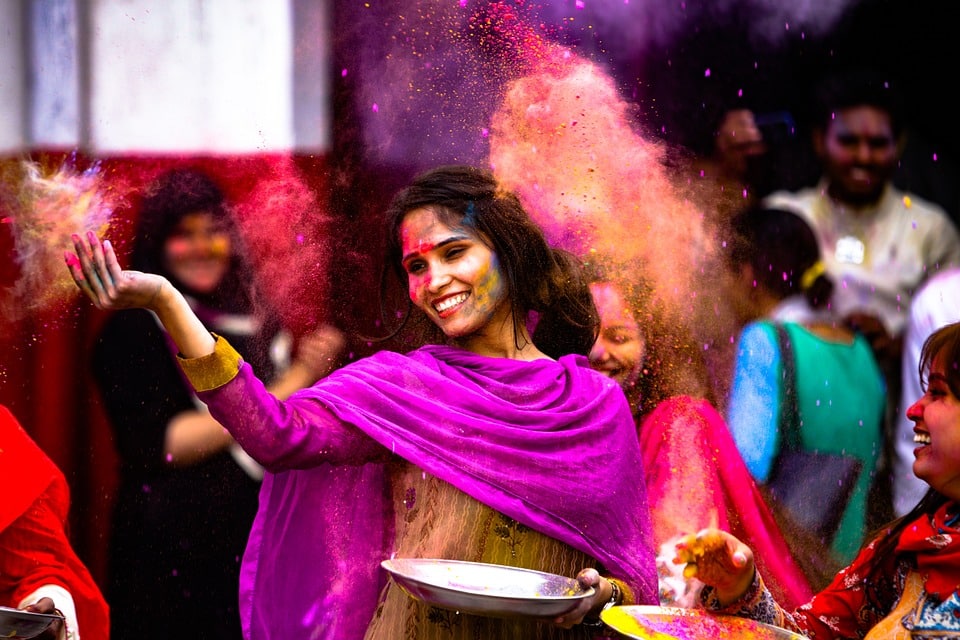
1. Braj ki Holi – UP
Braj Holi is celebrated a few days ahead of the main Holi festival. While the festival is dedicated to Hindu God Krishna, it also impersonates the eternal love of Radha and Krishna. As the legend goes, as a child, Lord Krishna would cry to his mother about Goddess Radha being fair while he had a dark complexion. His mother then advised him to smear colour on Radha, thus giving birth to Braj ki Holi. Since it is celebrated in the village of Braj Bhumi, the festival is called Braj ki Holi.
2. Laddoo ki Holi – Mathura
At Barsana, they have the Laddu Holi which is celebrated in Shriji Temple, a beautiful temple dedicated to Radha. Laddoos (sweet balls) are distributed among the devotees that signify the arrival of Lord Krishna to Barsana from Nandgaon, to meet Radha. The colours used during the celebration must be natural and made from flowers to avoid any harm.
3. Phoolon ki Holi (Holi of Flowers) – Vrindavan
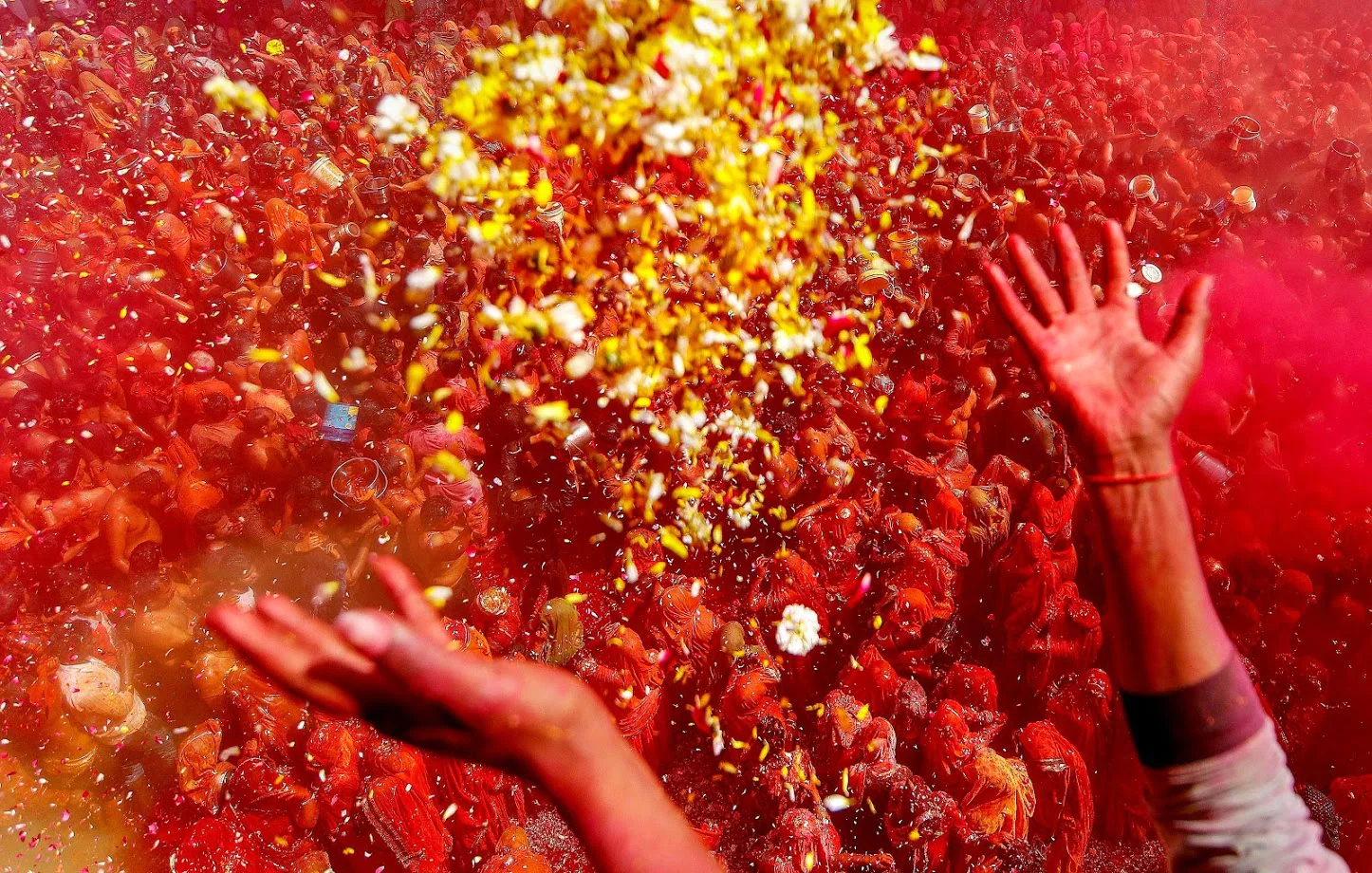
On Ekadashi before Holi, the Banke Bihari temple at Vrindavan celebrates the unique style of Holi. Vrindavan, the place where Lord Krishna spent his youth, is famous for celebrating Holi with flowers. Flower petals are being thrown at each other to rekindle brotherhood.
4. Lathmar Holi – Mathura
Krishna, along with his friends, used to visit Barsana from his village, Nandgaon to playfully put colours on Radha and her friends. The women offended by the act, drove them out of the town using sticks or Lathis.
Today, the people of Barsana, recreate this tale by celebrating it as ‘Lathmar Holi’. The men of Nandgaon visit Barsana during Holi, while the women hurl sticks at them. The men protect themselves from being hit by using shields. To add to the fun, some of the men dress up as women to avoid being hurled at. Locals take all the necessary safety precautions to ensure that no one gets hurt.
5. Eleholi – Jaipur
Eleholi Fest is an extremely exciting festival with really vibrant activities. They give comprehensive pleasure, from greeting you with a “Chung,” a traditional Holi festival instrument, to a venue supplied with “plates of dry organic colour,” folk dance/folk music, games competitions, snacks, and a pure vegetarian meal. This event is unique in that you can walk with elephants and feed them fruits, play Holi with elephants, bathe elephants, and decorate the elephant for festivals.
6. Basant Utsav at Shantiniketan – Kolkata
To replicate the charm of Holi, the legendary Indian poet Rabindranath Tagore established Basanta Utsav in Bolpur, or the Spring festival in Santiniketan, Birbhum. The joyful event has now become an indelible part of Bengali culture. Unlike the rambunctious Holi celebration all over India, here it is subdued and restrained but the essence of festivity is fine-tuned.
7. Yaoshang – Manipur
Yosang, like its name, is a Holi in Manipur. It is a five-day celebration that begins with paying homage to Pakhangba, the God. After the sun goes down, people gather to burn the cottage, and then the village youngsters go around the neighbourhood collecting donations. Local musicians perform in temples on the second and third days, while females solicit contributions. They play with colours and water over the last two days, leaving beautiful traces in people’s hearts.
8. Hola Mohalla – Punjab
Hola Mohalla, Hola Mahalla, or simply Hola is a Sikh holiday celebrated on the first day of the lunar month of Chet, which is generally in March. This follows the Hindu celebration of Holi by one day, according to a tradition established by Guru Gobind Singh; Hola is the masculine form of the feminine-sounding Holi.
9. Rangpanchami – Maharastra
Rangpanchami, performed in Maharashtra, is yet another wonderful kind of Holi celebration. The fun seems to never end on the fifth day before Phalgun Purnima. Since that time, a custom known as Krishna Leela has been observed in Mumbai and many other places in Maharashtra. Every year, pandals are set to smash pots in order to reenact the antics. The pots are hung from enormous heights, and large groups of guys build pyramids. Trained guys clamber upon them, while women stop them from reaching for the pot by splattering water and colours on them.
10. Manjul Kuli – Kerala
Holi is known as Manjul Kuli in Kerala, and it is a calm festivity. On the first day, people visit Gosripuram Thiruma’s Konkani shrine, whereas, on the preceding day, they play Holi with water and turmeric, avoiding the use of colours entirely. Colours are celebrated by singing traditional folk melodies that are both beautiful and serene. This nuanced approach to Holi is distinctive on its own.
11. Kaman Pandigai – Tamil Nadu
In Tamil Nadu, the significance of Holi alters since it is claimed that Lord Shiva resurrected their cherished Lord Kaamdeva, the God of Love, on this auspicious day. Unlike the traditional colour smearing practise, people here donate sandalwood to Kaamdeva in the hope that it may relieve his anguish. Songs are sung about Rati, Kaamdev’s wife, who was burned to ashes as a result of Lord Shiva’s fury.
The easiest way to witness the festivities is by downloading a safe and trusted car booking app so that on your way back, the only thing on your mind is all the memories you’re going to carry throughout your life!
Last Updated on February 27, 2024 by Shabari Shankar
